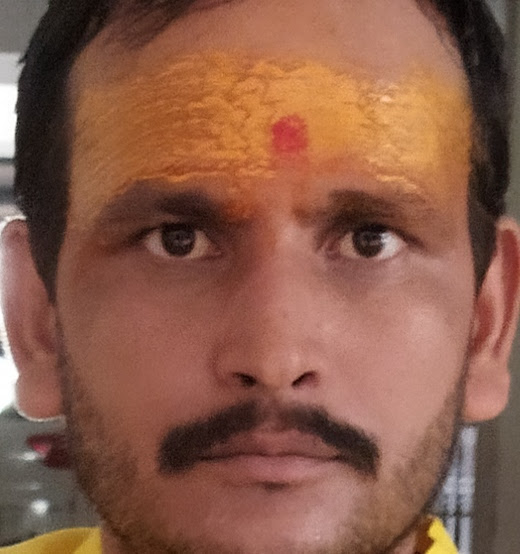Annaprashan Puja: A Celebration of First Solid Food
Definition of Annaprashan Puja
Annaprashan Puja is a Hindu ceremony that celebrates the introduction of solid food to a baby, typically between the ages of six and eight months. The word 'Annaprashan' literally translates to 'grain initiation'. This ceremony marks an important milestone in a baby's life and is considered one of the sixteen Sanskaras or sacraments in Hinduism.
Significance of Annaprashan Puja in Hindu Culture
In Hindu culture, food plays an important role, and its purity is often emphasized. Annaprashan Puja celebrates not only the physical development of the baby but also their spiritual growth.
It is believed that feeding solids for the first time during this auspicious ceremony brings good health, prosperity and longevity to the child. The puja also seeks blessings from deities such as Lord Ganesha, who removes obstacles, Goddess Lakshmi who blesses with prosperity and Lord Krishna who symbolizes love and happiness.
During this ceremony, family members come together to perform rituals that signify the purity and divinity associated with food consumption in Hinduism. The event marks an occasion for family reunion as parents invite relatives from far-flung regions to be part of their child's journey towards growth.
Overall, Annaprashan Puja holds immense significance for Hindus across geographies. It is a celebration that ushers abundant blessings upon infants embarking on their journey towards physical growth, cultural beliefs as well as emotional development through familial bonding.
Preparation for Annaprashan Puja
Selecting an auspicious date and time
The first step in preparing for Annaprashan Puja is to select an auspicious date and time. This is typically done by consulting with a Hindu priest or astrologer who can determine the most favorable day and time based on the baby's horoscope.
The selected date should fall between the ages of six months to one year, as it is believed that this is the ideal age for a baby to start solid food.
Inviting guests and family members
Annaprashan Puja is a significant milestone in a baby's life, so it is essential to invite family members and close friends to share in the joyous occasion.
The invitation process typically includes sending out formal invitations by mail or email, which should include all the necessary details such as the date, time, and location of the ceremony.
It's customary to invite relatives from both sides of the family, as well as close friends.
Decorating the house and puja area
Decorating plays an integral part in making Annaprashan Puja memorable. It involves creating an elaborate setup for performing puja rituals and arranging seating areas for guests.
Decorating can be done using flowers, rangolis (colourful designs made of powdered colours), candles, diyas (oil lamps), colourful drapes etc. It adds beauty and traditional touch to this sacred event.
Preparation for Annaprashan Puja requires careful planning, starting with selecting an auspicious date and time followed by inviting guests & family members adorned with vibrant decoration arrangements incorporated throughout home & puja area creates a perfect atmosphere filled with love & sanctity that embodies tradition & culture values that are passed down through generations!
Rituals and Traditions during Annaprashan Puja
Performing a purification ceremony for the baby
In Indian culture, it is believed that any kind of impurity can be harmful to health, particularly in children. For this reason, a purification ceremony is performed before the Annaprashan Puja.
This ritual involves bathing and dressing up the baby in new clothes. The priest recites mantras to purify the surroundings and cleanse the baby's soul.
Offering prayers to deities such as Lord Ganesha, Goddess Lakshmi, and Lord Krishna.
The Annaprashan Puja is considered incomplete without offering prayers to deities like Lord Ganesh, Goddess Lakshmi, and Lord Krishna. These deities are worshipped for their blessings in having a healthy baby with a long life ahead. The rituals involve lighting incense sticks and candles as offerings while chanting hymns.
Preparing the first solid food for the baby
The highlight of Annaprashan Puja is feeding solid food to a baby for the very first time. According to customs, Kheer (sweet rice pudding) or Payesh (rice pudding) are prepared as it symbolizes prosperity and sweetness in life ahead. The sweet dish is made with love by family members or caterers who are invited to be part of this joyous occasion.
Feeding the baby with blessings from elders
Before feeding solid food to the child, elders bless them by whispering mantras into their ear while also placing their hands on their head. This gesture is known as "Shubho Drishti," which means blessing them with good fortune for their future endeavors. After receiving blessings from elders, parents feed sweet rice pudding into their little one's mouth,
signifying the first steps of the baby's journey into adulthood.
Significance of Annaprashan Puja in Hindu Culture
Annaprashan Puja is an important milestone in the life of a Hindu baby, as it marks the introduction of solid food. In Hindu culture, this ceremony is considered to be auspicious and invokes blessings from the deities for a healthy and prosperous life for the child. The ceremony also serves as an occasion for family members and friends to come together and celebrate.
Symbolism behind feeding a baby solid food for the first time
Feeding a baby solid food for the first time during Annaprashan Puja holds great significance in Hindu culture. It is believed that this ceremony marks the beginning of a new phase in a child's life, where they slowly transition from being solely dependent on their mother's milk to being able to consume more substantial meals.
This ceremony symbolizes growth and development, both physically and spiritually.
Importance of family and community support during this milestone event
The support of family members and community during Annaprashan Puja is essential. This ceremony serves as an opportunity for parents to introduce their child to their extended family members, friends, and neighbors.
Family members bless the child with good health, prosperity, wisdom, success, happiness, long life, etc., while acquaintances bring gifts or offer monetary donations to show their love toward him/her. This event creates memories that will last a lifetime for all involved parties.
The presence of all dear ones offers emotional support by giving confidence in parenting decisions over this new phase in raising an infant who starts eating solid foods. Therefore it can be concluded that Annaprashan Puja is not only related to introducing solids but also marks socialization skills development that carries forward into adulthood concerning one's interaction with people around them.
Regional Variations in Annaprashan Puja
Different customs followed in different parts of India
Just like any other Indian ceremony, Annaprashan Puja also has regional variations. In North India, this ceremony is commonly known as Mundan Sanskara and the baby's head is shaved.
In South India, it is called Mukhe Bhaat or Bhaat Khulai and the baby is fed rice for the first time. Whereas in East India, especially in West Bengal and Odisha, it is known as Annaprashan or Anna Prasanam and the baby is fed kheer made of rice and milk.
Apart from these differences, there are also variations in the rituals performed during the ceremony. For instance, some regions have a custom of placing a gold coin on a tray filled with rice grains to predict the child's future by observing which hand he/she uses to pick up the coin.
Different names given to this ceremony
Annaprashan Puja has different names according to different traditions and cultures. In Sanskrit language, 'Annaprashana' literally means 'feeding with food'.
It is also known as Mukhe Bhaat (rice feeding) in Bengali culture and Choroonu (first feeding of rice) in Kerela. In Telugu culture, it is called 'Chowlamu' which means beginning of solid food whereas Marathi tradition calls it 'Bhaatkhulne' meaning opening of rice grains for consumption.
The diversity of traditions surrounding Annaprashan Puja represents the richness of Indian culture. The fact that people from different parts of India celebrate this milestone event differently shows how diverse yet unified they are when it comes to celebrating significant moments in life.
Conclusion:
Recapitulation of Key Points:
Annaprashan Puja is a significant milestone event in Hindu culture that celebrates the introduction of solid food to a baby. The ceremony involves various rituals and traditions such as purification ceremonies, offerings to deities, preparing the first solid food for the baby, and feeding it with blessings from elders. This ceremony also serves as an opportunity for families to come together and celebrate this momentous occasion.
The preparation for Annaprashan Puja involves selecting an auspicious date and time, inviting guests and family members, and decorating the house and puja area. The significance of Annaprashan Puja lies in the symbolism behind feeding a baby solid food for the first time and the importance of family and community support during this milestone event.
Regional variations exist in Annaprashan Puja with different customs followed in different parts of India. In some regions, this ceremony is known by different names such as Mukhe Bhaat or Choroonu.
Overall, Annaprashan Puja is a beautiful celebration that highlights family values, cultural traditions, and religious beliefs. By celebrating this event with loved ones, we create lasting memories that strengthen our bond with each other while honoring our ancestors' legacy.
An Optimistic Spin:
As we celebrate Annaprashan Puja, we are reminded of how important it is to come together as families despite our differences in culture or beliefs. This beautiful tradition serves as an opportunity for us to share our blessings with one another while cherishing moments that shape our lives forever. As we continue to honor these values through generations, we can find comfort knowing that we are creating a legacy that will last beyond our years.
FAQs
[1]Is Annaprashan Puja performed at a specific age?
Annaprashan Puja is typically performed when a child reaches the age of six months or as advised by the family's religious and cultural beliefs.
[2]Can Annaprashan Puja be performed at home?
Yes, Annaprashan Puja can be performed at home or at a temple, depending on the family's preferences and convenience.
[3]What are some traditional food items served during Annaprashan Puja?
Traditional food items like cooked rice, mashed potatoes, kheer (rice pudding), sweetened yogurt, and mashed fruits are commonly served during Annaprashan Puja.
[4]Can family and friends participate in the feeding ceremony?
Yes, family members and close friends can participate in the feeding ceremony, symbolizing their love and support for the child's journey into solid food.
[5]Is it necessary to consult an astrologer for selecting the auspicious date?
While consulting an astrologer is common for selecting the auspicious date, it ultimately depends on the family's beliefs and cultural practices. Some families may choose to follow astrological guidance, while others may prioritize convenience and personal preferences.





